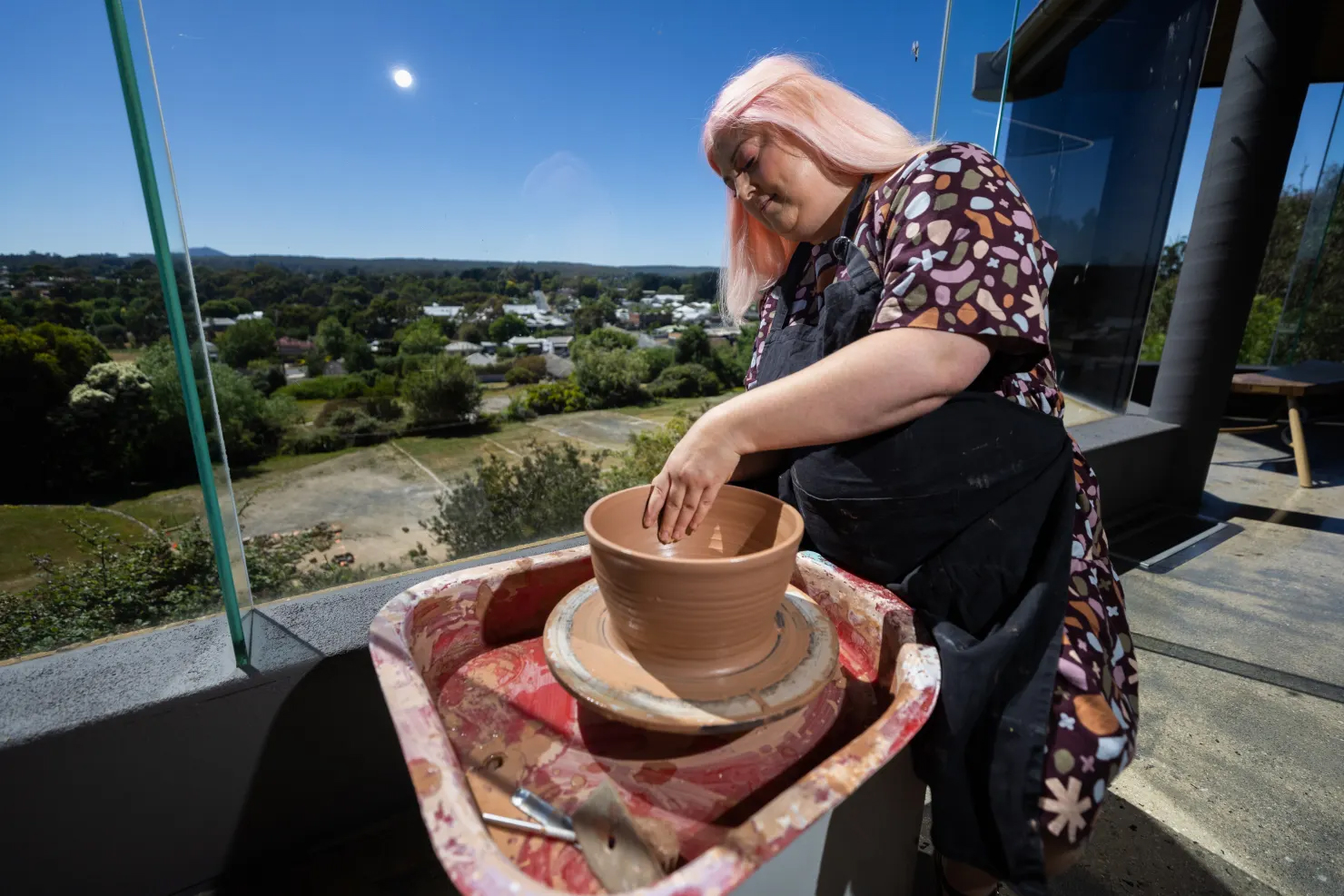Blacksmith Rob Hayes is an expert maker of medieval armour and weapons. CREDIT: JASON SOUTH.
Benjamin Preiss, ‘We’re hoping people make heirlooms’: The artisans reviving medieval trades, The Age, 19 March 2023
Rob Hayes had to concede his days of waging medieval battle were over after the savage axe blow that broke his wrist in 2021.
Hayes had been travelling the world as a competitor in Buhurt, a sport in which combatants duel with medieval-style weapons and armour.
But after that fateful tournament in Sydney, the self-confessed nerd and history enthusiast decided to give up risking serious injury and focus on his career as a blacksmith specialising in historic weapons and armour.
“I sat there thinking, ‘Do I want to keep doing this into old age? If so, I have to stop playing with swords’,” he said.
At his farm at Mount Franklin, near Daylesford and about 120 kilometres north-west of Melbourne, Hayes creates replica items including Viking boar spears, medieval kitchen knives and 16th-century Hungarian war hammers.
And when his wrist healed, Hayes turned his hand to teaching his trade.

Hayes is not the only one doing so. He’s among a group of rare artisans in Victoria sharing expert knowledge of their crafts through workshops and courses, run from the Centre for Rare Arts and Forgotten Trades in Ballarat.
The craftspeople come from a range of fields, from textile weaving and blacksmithing to stained-glass and leather work. They include specialists makers of jewellery, chairs and even cane fishing rods.
The centre, which opened late last year, is part of an expansion of Sovereign Hill, the 1850s-style Gold Rush museum that has been an excursion destination for generations of school children.
The managers of Sovereign Hill say the rare trades centre is among the most significant projects in its 53-year history and part of a plan to broaden the attraction’s appeal.

Sovereign Hill hopes to ride the wave of enthusiasm for learning handmade skills that helped many people survive the gruelling COVID-19 lockdowns (think homemade sourdough).
Hayes has run two courses at the rare trades centre, making forearm guards known as vambraces, which require sheets of metal to be hammered onto the owner to fit the contours of their arms.
He said the courses, which cost about $400, sold out almost immediately. He is due to teach more later this year.
Buhurt competitor Luke Durber, who previously studied armour smithing with Hayes, planned to travel from his home in Perth to Ballarat for one of Hayes’ workshops.
Durber began to explore metal work more seriously during the pandemic.
“I really enjoyed the way the metal moved,” he said. “I was looking for a creative outlet.”
Clunes-based weaver Prue Simmons specialises in Japanese saori weaving, an art form that prioritises accessibility and flowing movements at the loom rather than precise pattern making.
“There’s no such thing as a mistake [in saori]. It’s an easy movement,” she said.
She said her workshops, where she makes scarves and wall hangings, helped participants reconnect with skills that were once commonplace.

“Weaving is not something we do much in our homes anymore. We’ve sent that offshore.”
The thirst for learning many people felt during lockdowns has outlasted the pandemic, Simmons said.
“People have had a chance to explore doing handcrafts at home,” she said. “They’ve got the bug.”
While lockdowns inspired interest in learning new crafts, they dealt a huge blow to visitation at Sovereign Hill. Its latest annual report shows 298,884 people visited in the 2021-22 financial year, which represented 57 per cent of the 2019 figure.
Sovereign Hill deputy chief executive Katrina Nitschke hoped the rare trades centre would attract more visitors, and help ensure the skills of expert tradespeople would be preserved for future generations.
“They represent such an important part of our cultural heritage,” she said. “People still practise these trades today, but they’re at risk of being lost because they’re really hard to keep alive,” she said.
Nitschke wants students of rare trades to create artefacts that will last generations.
“We’re hoping people make heirlooms.”

